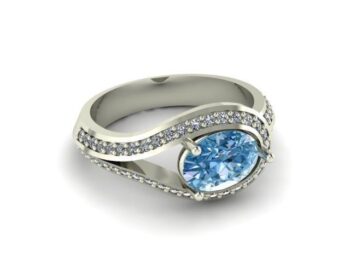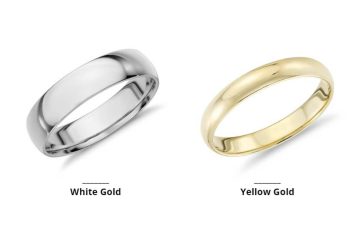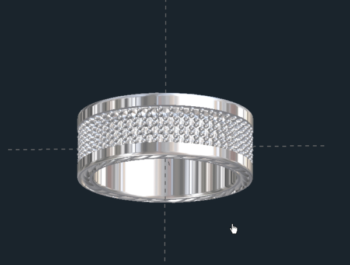14K Gold Jewelry is everywhere. In the US, you will not find nearly as much 10K or 18K jewelry as you will 14K. It is the default gold purity for most gold jewelry for a variety of reasons. 14K Gold is durable, beautiful, and more affordable than 18K. It can also be made into rings, pendants, earrings, etc. At one point, it was even used in dentistry. In this post, we will discuss all things 14K gold; its properties, origins, and uses.
What is 14K Gold Jewelry
14K gold jewelry refers to jewelry that is made with a gold alloy containing 58.3% pure gold. The “K” in 14K stands for karat, which is a unit of measurement used to indicate the purity of gold. In this case, 14K gold contains 14 parts of pure gold and 10 parts of other metals, such as copper or silver.
In terms of appearance, 14K jewelry has a warm, rich color that is highly sought after. The addition of other metals gives it a unique hue that can range from a pale yellow to a deeper, more intense shade. This versatility makes 14K jewelry suitable for a wide range of styles and preferences.

The History Of Gold Alloys Used In Gold Jewelry
Gold jewelry has a rich history of incorporating alloys. These alloys are metals that are mixed with gold to enhance its durability and create different colors. The use of alloys in gold jewelry dates back thousands of years to ancient civilizations such as the Egyptians and Romans. They discovered that by adding other metals like silver, copper, or zinc, they could create alloys that were stronger and more resistant to wear and tear. This allowed them to create intricate designs and increase the longevity of their jewelry pieces.
One of the most commonly used alloys in gold jewelry is 18 karat gold. This alloy consists of 75% pure gold and 25% other metals. The addition of these metals, such as copper and silver, gives the gold a stronger and more durable structure. It also allows jewelers to create a variety of colors, ranging from yellow gold to rose gold and white gold. Each color has its own unique appeal and is popular among different cultures.
Over time, advancements in technology and metallurgy have led to the development of new alloys used in gold jewelry. For example, white gold is created by adding metals such as nickel, palladium, or platinum to gold. This alloy gives gold a silvery-white appearance, similar to platinum or silver. It has become a popular choice for jewelry due to its elegant and timeless look.
The history of alloys used in gold jewelry is a testament to human creativity and ingenuity. From ancient civilizations to modern times, the use of alloys has allowed jewelers to create beautiful and durable pieces that withstand the test of time. Whether it’s the warm glow of yellow gold, or the timeless elegance of white gold, alloys have played a crucial role in shaping the world of gold jewelry.
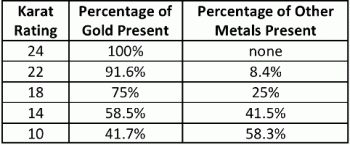
What Is A Karat & Who Invented Them
Gold karats are a measurement of the purity of gold. They indicate the amount of pure gold in a piece of jewelry or other gold item. The karat system ranges from 24 karats, which is pure gold, to lower karat values that contain a mixture of gold and other metals. The concept of gold karats dates back to ancient civilizations, where they were used to determine the value and quality of gold. Today, gold karats are recognized worldwide as a standard for measuring the purity of gold.
The invention of gold karats cannot be attributed to a single individual. Instead, it is a result of the collective knowledge and practices of ancient civilizations. Gold has been valued and used for adornment for thousands of years, and different cultures developed their own methods for assessing its purity. For example, the ancient Egyptians used a system based on the weight of gold in a piece, while the ancient Greeks and Romans used a system based on the ratio of gold to other metals.
The modern karat system, as we know it today, originated in the Middle East. It was further refined and standardized by European goldsmiths during the medieval period. These goldsmiths developed techniques to accurately measure the purity of gold and assign it a karat value. Over time, these practices spread across the globe, and the karat system became widely accepted as a way to determine the quality and value of gold. Today, it is an essential tool for both consumers and professionals in the gold industry.
Physical Properties of 14k Gold Jewelry
Color
14k gold jewelry is a popular choice for many people due to its unique physical properties. One of the key characteristics of 14k gold is its composition, which consists of 58.3% pure gold and 41.7% other metals. This combination gives 14k gold jewelry a beautiful yellow hue that is both elegant and timeless.
In terms of color, 14k typically has a slightly yellow hue. This is due to the presence of other metals in the alloy. The exact shade of yellow can vary depending on the specific proportions of metals used. Some 14k gold jewelry may have a deeper, more intense yellow color, while others may have a lighter, more subtle yellow tone.
In terms of appearance, 14k jewelry often has a warm and lustrous glow. The combination of pure gold and other metals gives it a beautiful sheen that catches the light and adds a touch of elegance to any piece. Additionally, 14k gold is known for its durability, making it a practical choice for everyday wear.
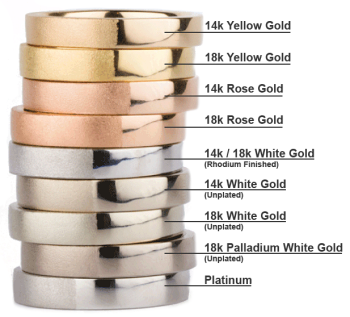
Durability
14k gold is known for its durability and strength. This type of gold is made up of 58.3% pure gold and 41.7% other metals, such as copper and silver. The addition of these alloy metals gives 14k gold its durability and makes it more resistant to scratches and dents compared to higher karat golds, such as 18k or 24k.
While 14k is more durable than higher karat golds, it is important to note that it is still a relatively soft metal compared to other materials, such as platinum or titanium. Therefore, it is still recommended to take proper care of 14k jewelry, such as removing it before engaging in activities that may cause excessive wear or damage. Overall, 14k offers a balance of durability and beauty, making it a popular choice for those seeking a long-lasting and elegant piece of jewelry.
Malleability
14k gold is a popular choice for jewelry due to its malleability. Malleability refers to the ability of a material to be hammered or pressed into different shapes without breaking. In the case of 14k, it is a relatively soft metal that can be easily manipulated by skilled jewelers. This makes it an ideal choice for intricate designs and delicate pieces of jewelry.
One of the main advantages of the malleability of 14k is that it allows for a wide range of design options. Jewelers can create intricate patterns, filigree work, and detailed engravings on 14k jewelry. This makes it a popular choice for engagement rings, wedding bands, and other special occasion jewelry.
However, it is important to note that the malleability of 14k gold also means that it is more prone to scratches and dents compared to harder metals like platinum or titanium. This is why it is recommended to remove 14k gold when engaging in activities that may cause damage, such as heavy lifting or sports.
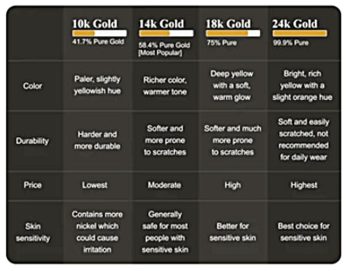
Cons Of 14K
When considering the purchase of a 14K gold item, it is important to be aware of the potential drawbacks. One of the main cons of 14K gold is its lower purity compared to higher karat gold. While 14K gold contains 58.3% pure gold, the remaining 41.7% is made up of other metals, such as copper or silver. This lower gold content can result in a slightly less vibrant color. It can can also result in a slightly lower value compared to higher karat gold.
Another con of 14K gold is its potential for causing skin irritation or allergic reactions. The presence of other metals in 14K gold, especially copper, can sometimes trigger sensitivities in individuals with metal allergies. It is important to be aware of any known metal allergies before purchasing and wearing 14K gold jewelry.
Lastly, 14K gold may require more frequent maintenance compared to higher karat gold. The additional metals in 14K gold can make it more prone to scratches and tarnishing. Regular cleaning and polishing may be necessary to maintain its shine and appearance.
Gold Melting Points
Gold karat melting points vary depending on the purity of the gold. The melting point of pure gold, also known as 24 karat gold, is approximately 1,064 degrees Celsius (1,947 degrees Fahrenheit). However, as the purity of gold decreases, so does its melting point. For example, 18 karat gold, is 75% pure gold. It has a melting point of around 960 degrees Celsius (1,760 degrees Fahrenheit). Similarly, 14 karat gold, which is 58.3% pure gold, has a melting point of about 880 degrees Celsius (1,616 degrees Fahrenheit). It is important to note that these melting points are approximate and can vary slightly depending on the specific composition of the gold alloy.

